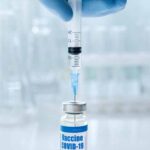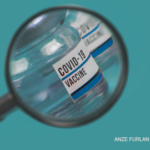The COVID-19 Clinical Guidance Task Force also recommends holding immunosuppressants in most circumstances for patients with active SARS-CoV-2 infection, regardless of COVID-19 severity, although this must be interpreted in the overall clinical context. Patients can take their therapies again one to two weeks after symptom resolution, or potentially later in patients recovering from severe COVID-19.3 Dr. Winthrop points out that this is similar to how he handles immunosuppressed patients who have infections from other causes.
Currently, no specific recommendations exist recommending COVID-19 boosters in immunosuppressed patients in addition to those recommended for the general population. However, Dr. Winthrop notes that one might consider giving an additional COVID-19 booster to specific patients, for example a patient on prolonged B cell-depleting therapy.
COVID Variants
New viral strains have brought somewhat different disease presentations and severity. Successful new strains often find ways to blunt patients’ immune responses, which have been shaped by earlier variants.
Dr. Kim notes that the omicron subvariants often present with primarily upper respiratory symptoms. Earlier variants of the SARS-CoV-2 virus were comparatively more prone to cause pneumonia. The incidence of multisystem inflammatory syndrome in children (MIS-C) has also dropped dramatically since the early days of the pandemic, perhaps due to decreased circulation of previous strains.
Hospitalization rates and mortality have substantially improved since the beginning of the pandemic, when older variants, such as delta, were more prominent. However, Dr. Kim points out that it is hard to tell for sure whether newer variants are truly less virulent. Improving hospitalization and mortality rates may be more a result of patients’ enhanced immunity from vaccination or previous SARS-CoV-2 infection.
Dr. Kim notes that because variants and preexisting population immunity are changing at the same time, it’s hard to define true causality. “I’m still not clear whether [this decreased virulence] can be extrapolated to the people we’re most concerned about, the patients on potent immunosuppression.”
The omicron BA.5 lineage had been dominant in the U.S. for months, but recently its descendants, BQ.1 (9.3% as of Jan. 28, 2023) and BQ1.1 (21.8%), have become more common. The most common SARS-CoV-2 variant circulating in the U.S. is XBB1.5 (61.3%), which has been becoming more widespread since December 2022. It is an offshoot of XBB (2.8%) and ultimately of the BA.2 omicron lineage.4
Both XBB and XBB.1.5 carry mutations in the spike protein that somewhat blunt the effectiveness of antibodies from vaccination or infection with earlier omicron strains. XBB1.5 appears to be more transmissible than other currently circulating variants, but no evidence has clearly indicated this will result in a surge in hospitalizations.5



